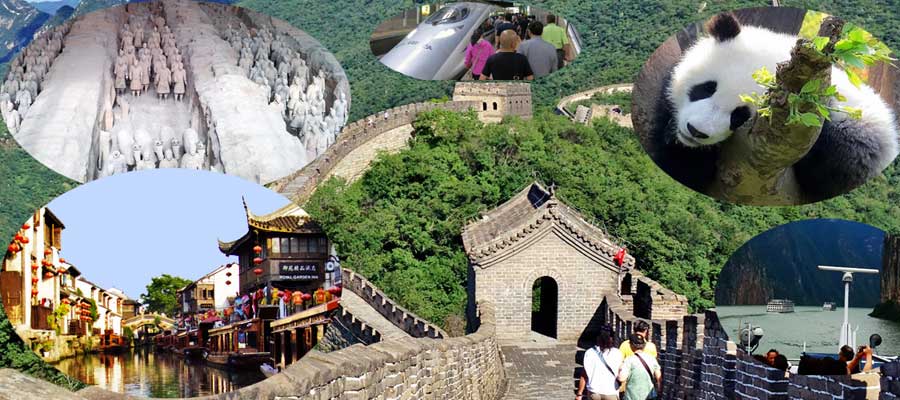Why Tibet’s Potala Palace Remains a Spiritual Marvel
Welcome to Jusha Travel! Here at jusha.travel, we love sharing tips to make your China journey unforgettable—especially when it comes to exploring Tibet’s rich spiritual heritage. Imagine standing before a palace that has witnessed centuries of Tibetan Buddhism, perched dramatically on a red hill above Lhasa. The Potala Palace isn’t just a building; it’s a living testament to Tibetan religious traditions, architectural ingenuity, and profound spirituality. In this post, we’ll dive into why this UNESCO World Heritage Site continues to captivate travelers seeking Buddhist architecture and spiritual journeys. Whether you’re planning a Tibet travel adventure or simply curious about China’s cultural heritage, the Potala Palace offers insights into Tibet’s enduring spiritual legacy.
The Historical Roots of Spiritual Significance
The Potala Palace’s spiritual marvel begins with its ancient origins, rooted deeply in Tibetan Buddhism and the region’s Buddhist architecture. Constructed under King Songtsen Gampo in the 7th century and significantly expanded in the 17th century by the Fifth Dalai Lama, it served as the winter residence for successive Dalai Lamas and the epicenter of Tibetan governance. Sitting atop Marpo Ri (“Red Hill”)—considered a spiritually powerful site associated with Avalokitesvara, the Bodhisattva of compassion—the palace embodies the essence of Tibetan spiritual journeys, symbolizing the path from worldly existence to enlightenment.
Architecturally, it represents a vertical ascent toward the divine, with lower levels handling mundane affairs and upper floors dedicated to sacred rituals. This design mirrors Buddhist concepts, making the Potala a tangible metaphor for spiritual growth. For travelers, understanding this history enhances your Tibet travel experience; we recommend visiting during the Tibetan New Year (Losar) in February or March to witness traditional ceremonies that bring the palace’s past to life. Fun fact: Built at an altitude of 3,700 meters, its earthquake-resistant foundation showcases ancient engineering prowess, blending spiritual symbolism with practical innovation.
If you’re intrigued by Tibet’s historical and cultural heritage, check out our guide on Exploring China: History, Culture, and Modernity to learn more about China’s broader historical tapestry.
Architectural Wonders and Buddhist Symbolism
What truly makes the Potala Palace a marvel is its stunning Buddhist architecture, a blend of artistic brilliance and spiritual symbolism that inspires awe in visitors. The palace is divided into two main parts: the White Palace (Potrang Karpo), which housed the Dalai Lama’s living quarters and administrative functions, and the Red Palace (Potrang Marpo), the spiritual heart adorned with ornate stupas, tombs of eight Dalai Lamas, gold, and precious stones—representing incorruptible spirituality and divine radiance.
With over 1,000 rooms spanning 13 stories, it includes thousands of sacred relics, scriptures, murals, and statues, totaling more than 10,000 shrines and 200,000 statues. This architectural grandeur isn’t just for show; each element reflects Tibetan Buddhism’s cosmology, with the palace evolving layer by layer like a journey toward enlightenment. Modern visitors can appreciate how technology enhances these old-world wonders—use AR apps to visualize the palace’s original splendor or download audio guides for immersive explorations.
For a deeper dive into China’s architectural marvels, our post on Best Places to Visit in China: Discover Iconic Landmarks and Hidden Gems highlights iconic sites like the Potala alongside other must-sees.
A Sacred Destination for Pilgrims and Tourists
The Potala Palace stands as a vital pilgrimage site, drawing devotees for spiritual journeys that connect them to Tibetan Buddhism’s essence. Pilgrims from Tibet and worldwide describe an atmosphere of peace and spiritual presence, infused by centuries of prayers. Within its walls, sacred relics embody Tibetan cultural heritage, making it a living treasury of religious culture.
For tourists, visiting the Potala is a transformative experience—book tickets in advance (available online via official sites) and prepare for altitude acclimation, as Lhasa’s high elevation (3,658 meters) can be taxing. Combine your visit with nearby attractions like the Jokhang Temple or explore Tibetan food; try yak butter tea or momo dumplings for an authentic taste of regional cuisine. Pro tip: Join guided tours that include cultural insights on Buddhism to enrich your understanding. Even exiles worldwide see images of the palace as symbols of Tibetan identity, showcasing its role in preserving cultural heritage against modern challenges.
To prepare for similar spiritual travels across China, read our Exploring Chinese Festivals: A Guide to Vibrant Cultural Celebrations in China for tips on festivals that blend ancient traditions with contemporary life.
Cultural Heritage and Modern Preservation
As a UNESCO World Heritage Site since 1994, the Potala embodies Tibetan cultural heritage, representing traditional governance and daily life shaped by Buddhism. Today, operated as a museum by Chinese authorities, it serves as a living cultural preservation hub for scholars, pilgrims, and tourists. Despite historical upheavals like the 1959 exile of the Dalai Lama, the palace remains a beacon of Tibetan identity, its images circulating in global Tibetan communities as markers of continuity.
Modern technology plays a role here—digital restorations and VR experiences allow remote visitors to explore its interiors, bridging physical and virtual spiritual journeys. Explore nearby cultural highlights, such as the Sera Monastery, and engage with local traditions like Tibetan New Year festivals. For food lovers, Lhasa offers a fusion of Tibetan staples (like tsampa barley meal) with Chinese influences, reflecting Tibet’s role in China’s culinary diversity.
If Tibet’s heritage sparks your interest in China’s historic sites, explore our comprehensive Historical Places in China: A Comprehensive Guide to Ancient Sites and Cultural Landmarks.
Practical Tips for Your Tibet Travel Adventure
Embarking on a spiritual journey to the Potala requires practical planning, especially for foreigners. Secure a Tibet Travel Permit (essential since 2008) through state-approved agencies; travel agencies like those partnered with jusha.travel can assist. Fly to Lhasa or take the Qinghai-Tibet Railway for scenic routes, and acclimate to the altitude gradually to avoid issues.
Visit during shoulder seasons (April to June or September to October) to beat crowds and appreciate the serene atmosphere. Respect cultural etiquette—dress modestly, maintain quiet reverence, and avoid photography in restricted areas. For technology enthusiasts, download maps via WeChat and use translation apps for local interactions.
To combine culture with craftsmanship, try our insights on Why Chinese Calligraphy Is a Cultural Art You Should Try for activities that deepen your appreciation of Tibetan art forms.
Conclusion: A Timeless Spiritual Legacy
In essence, the Potala Palace endures as a spiritual marvel because it masterfully blends Tibetan Buddhism’s devotion, Buddhist architecture’s symbolism, spiritual journeys’ depth, and cultural heritage’s resilience. From its foundational symbolism atop Marpo Ri to its ornate Red Palace interiors, it encapsulates the soul of Tibet—and by extension, China’s diverse spiritual landscape. Visitors leave not just with photos, but with a profound sense of the sacred, reminding us of humanity’s quest for transcendence.
Here at jusha.travel, we’re passionate about curating experiences that inspire your China adventures. Ready to plan your own Tibet travel odyssey? Share your thoughts in the comments below, and visit jusha.travel for more tips on China’s hidden gems—from the Great Wall to Sichuan’s spicy cuisines. Bon voyage!
References: For more on the Potala Palace’s history, check out sources like Himalayan Glacier and The Diplomat. UNESCO listings at UNESCO World Heritage provide official insights.

